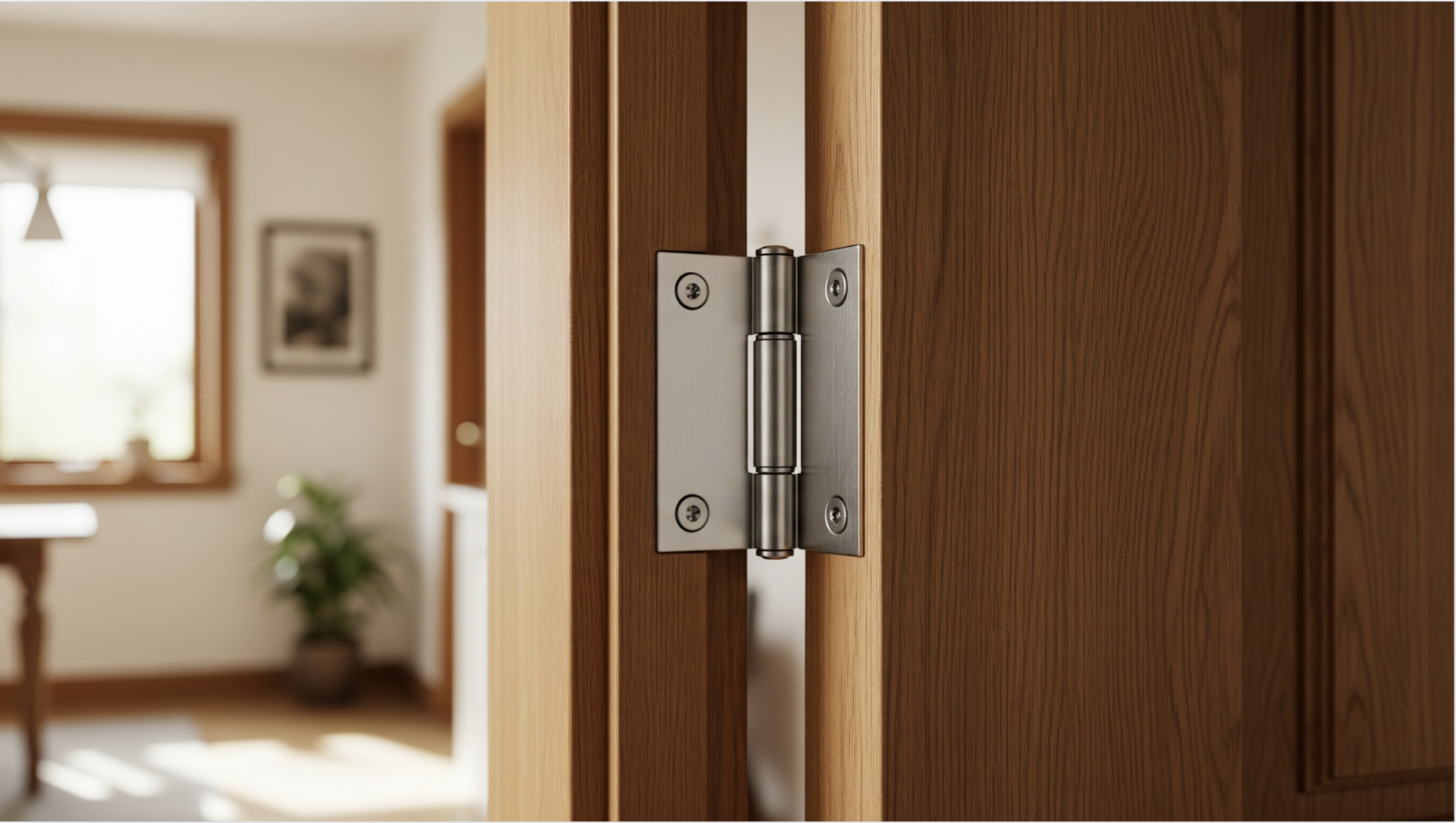I used to think all hinges were the same until I tried replacing the squeaky ones on my old door. That’s when I stumbled into the world of butt hinges.
At first, I laughed at the name. But once I looked closer, I realized how important and common they are. These hinges are commonly used on doors, cabinets, and various DIY projects.
I had no idea something so small could have such a big impact on how things open, close, and stay secure. Learning how butt hinges work helped me better understand home projects and make installations easier.
In this blog, I’ll explain what a butt hinge is, how it functions, where it fits best, and why it’s so widely used. If you’re new to tools or repairs, this will help you get started.
What Is a Butt Hinge?
A butt hinge is one of the most commonly used hinges in woodworking and construction. It joins two surfaces, typically a door and its frame, allowing one to pivot smoothly.
The hinge has two rectangular plates called leaves, which are attached to the edge of the door and the frame. These leaves are connected by a central pin housed in the knuckle, allowing the door to swing open and closed.
When the door is closed, most of the hinge remains hidden, with only the knuckle showing. This makes it a clean, flush-fitting option. Butt hinges are strong, simple to install, and designed to carry heavy weight.
They’re widely used on doors, cabinets, and furniture. Their durability and ability to sit nearly flush with surfaces make them ideal for residential and commercial use.
Key Parts of a Butt Hinge
Understanding the parts of a butt hinge helps you install it correctly and choose the right type for your project. Each component has a specific role that enables the hinge to function smoothly and securely.
1. The Leaf Plates
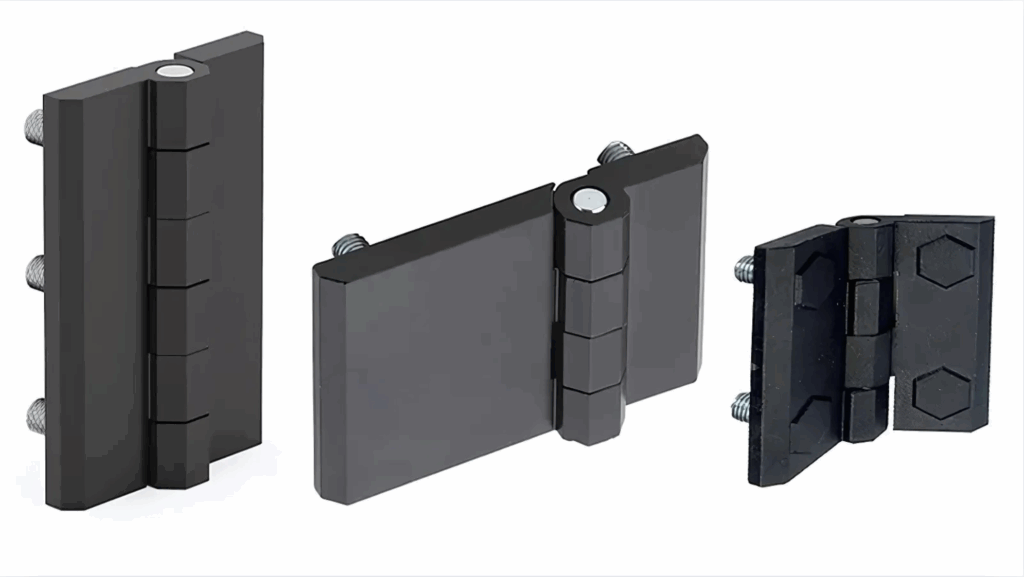
Butt hinges have two flat metal plates called leaves. One leaf attaches to the door, and the other fastens to the door frame. These plates usually have screw holes for easy mounting.
When the hinge is installed, the plates are mortised or set into shallow recesses in the wood so they sit flush with the surface. This design allows the door to close fully without gaps.
The leaves fold together when the door shuts, bringing stability and a clean finish to the installation.
2. The Knuckle (or Barrel)
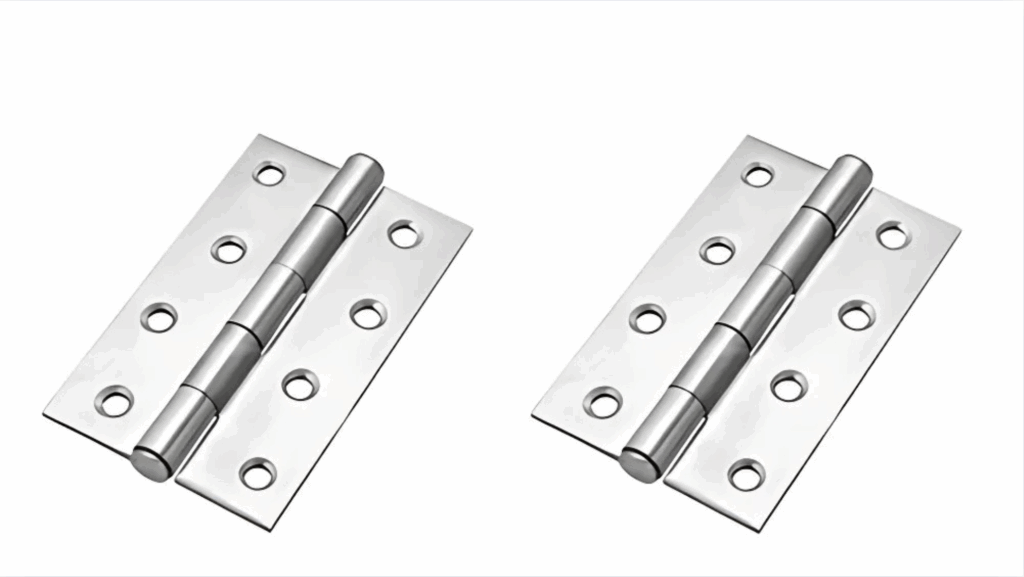
The knuckle is the round, central part of the hinge where the two leaves connect. It’s made up of curled ends from each leaf that interlock with one another.
This interlocking design forms a hollow cylinder that rotates when the door swings. The knuckle is always visible when the door is closed, and its thickness can vary depending on the hinge’s load capacity.
A larger, heavier-duty hinge typically has a wider knuckle for added strength and smoother movement.
3. The Pin
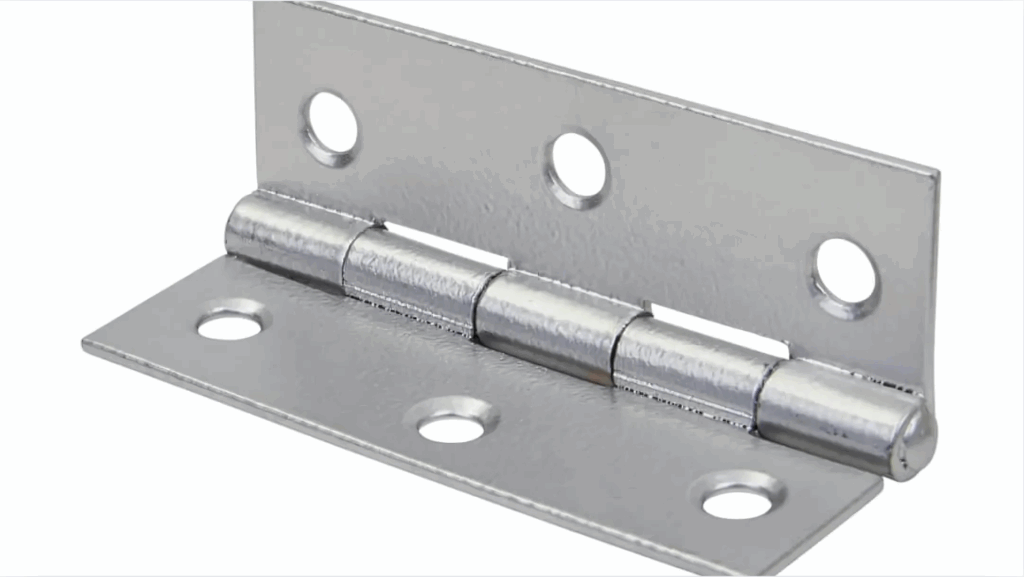
Inside the knuckle, a long, straight pin runs through the center. This pin holds the two leaves together and serves as the pivot axis for the door’s movement.
It can either be fixed or removable. Fixed pins are commonly used in exterior doors for security, while removable pins are useful for easily removing doors without needing to unscrew the hinges.
The pin’s smooth rotation enables the hinge to operate with minimal friction, allowing the door to open and close effortlessly.
How Does a Butt Hinge Work?
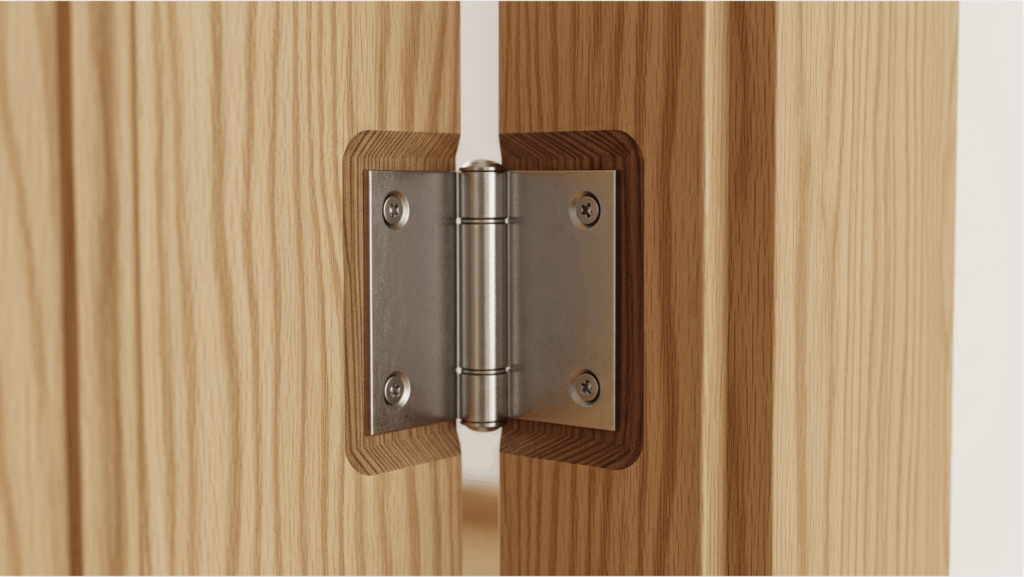
A butt hinge is a simple yet effective mechanism that ensures smooth door movement. This is how it works:
- Basic Pivot Mechanism: The two leaves are attached to the door and frame, rotating around a central pin housed in the knuckle.
- Smooth Operation: As the door opens or closes, the leaves pivot smoothly on the pin, allowing controlled movement.
- Flush Fit: The leaves are recessed into shallow slots (mortises), keeping the hinge flush with the surfaces for a cleaner look and better door closure.
- Stability & Support: The flush fit provides greater stability and prevents sagging over time by evenly distributing the door’s weight.
- Durability: The simple design is durable and ideal for everyday use, offering both strength and long-lasting function.
This makes the butt hinge a reliable choice for areas where appearance and functionality are key.
Common Types of Butt Hinges
While all butt hinges serve the same basic purpose, there are different variations designed for specific uses. Below are the most popular types of butt hinges you’ll come across.
| TYPE | DESCRIPTION | BEST For |
|---|---|---|
| Standard Butt Hinges | Basic design with two plates and a central pin. Affordable, simple, and widely available. | Interior/exterior doors, cabinets, and general household use. |
| Ball Bearing Butt Hinges | Contains ball bearings in the knuckle for smoother, quieter operation and less wear. | Heavy or high-traffic doors in schools, offices, or hospitals. |
| Spring-Loaded Butt Hinges | Built-in spring mechanism that closes the door automatically. Adjustable in some models. | Garages, utility rooms, fire doors, and spaces requiring self-closing action. |
| Rising Butt Hinges | Lifts the door slightly when opened to help it clear carpet or uneven floors. | Older homes, low-clearance areas, or uneven flooring. |
Each type has unique features that improve performance depending on the setting, whether it’s a home, commercial building, or specialized woodworking project.
Where Are Butt Hinges Used?
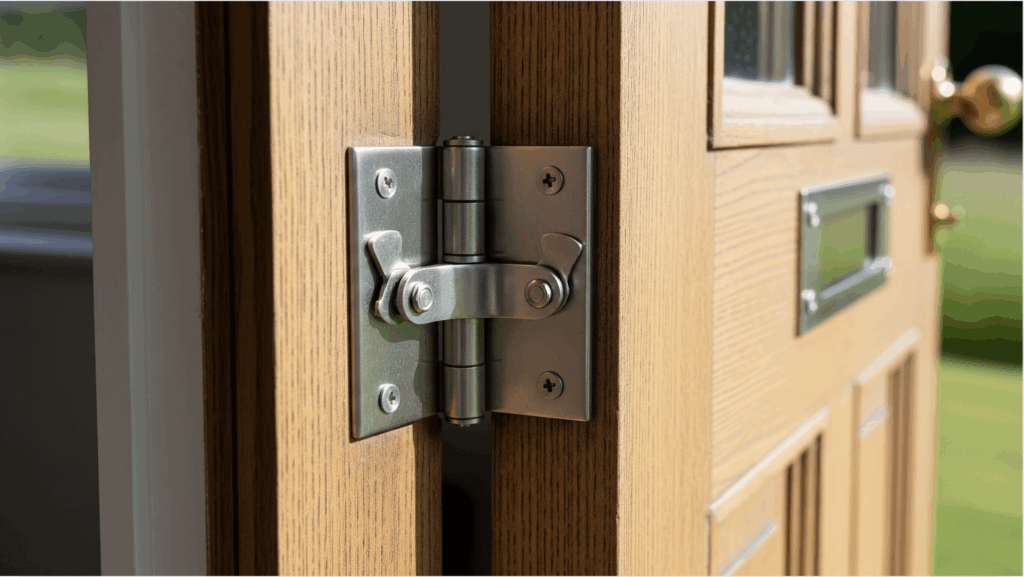
Butt hinges are used in countless everyday applications thanks to their simple, strong, and discreet design. They provide smooth movement while keeping surfaces aligned and maintaining a clean appearance.
-
Interior and exterior doors: Butt hinges are the standard choice for both room and entry doors. They support the door’s weight, allow a full range of motion, and blend in when the door is shut. Exterior versions are often more heavy-duty and weather-resistant.
-
Cabinets and cupboards: Smaller butt hinges are perfect for kitchen and bathroom cabinets. They offer reliable swing motion and help keep cabinet doors flush with the frame for a good finish.
-
Gates and fences: Outdoor-grade butt hinges are used for wooden or metal gates, offering strong support while withstanding weather changes. They’re often larger and treated for rust resistance.
-
Security access panels: In commercial buildings, utility rooms, or industrial settings, heavy-duty butt hinges support access doors or panels that need both durability and secure operation.
-
Closets and wardrobes: Closet doors benefit from the flush fit and easy swing motion that butt hinges provide. They help doors align neatly without sagging or sticking over time.
What Materials Are Butt Hinges Made From?
Butt hinges come in various materials to suit different environments, budgets, and style preferences. The type of material affects durability, appearance, and resistance to elements like moisture or rust.
| MATERIAL | FEATURES | BEST USE |
|---|---|---|
| Steel | Strong, affordable, and widely available. May be coated to resist corrosion. | Interior doors, general-purpose applications. |
| Brass | Decorative with natural corrosion resistance. Adds a polished, upscale look. | High-end furniture, visible hardware on doors. |
| Stainless Steel | Rust-resistant and durable in harsh or wet conditions. | Outdoor gates, bathrooms, and coastal areas. |
| Bronze | Offers a rustic finish and is long-lasting with proper care. | Traditional homes, vintage-styled furniture, or doors. |
Tips for Installing a Butt Hinge
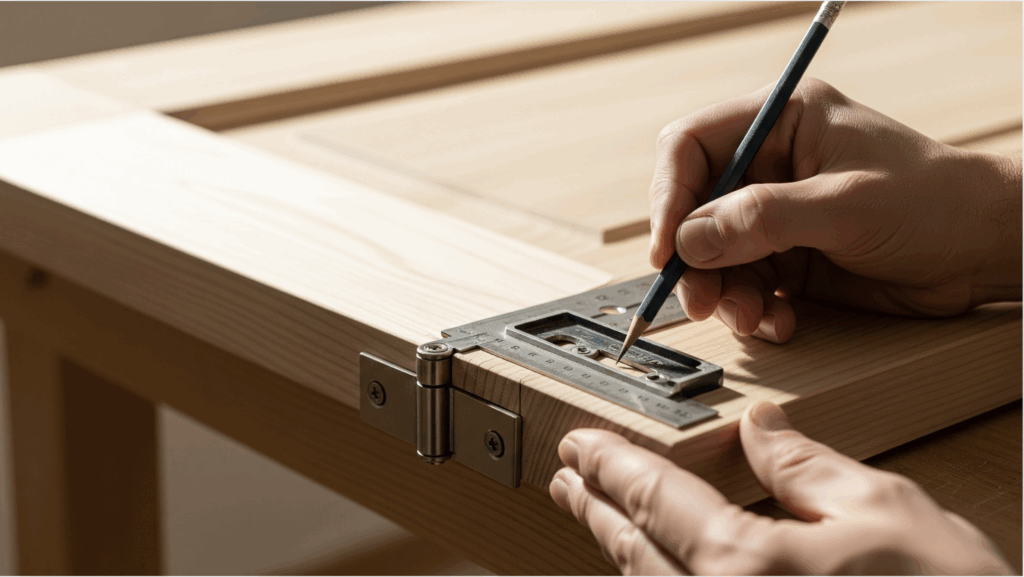
Installing a butt hinge may look simple, but doing it right ensures the door opens smoothly and lasts longer. Precision and patience are key.
- Mark the hinge placement carefully: Measure from the top and bottom of the door to mark even positions, usually about 5 inches from the top and 10 inches from the bottom. Use a pencil and a straightedge (or a square) for accurate lines.
- Cut mortises for a flush fit: Use a sharp chisel or a router to carve shallow mortises in both the door and the frame. The hinge leaf should sit level with the surface, not raised or recessed too deeply.
- Drill pilot holes for screws: Before attaching the hinge, drill small guide holes to avoid splitting the wood and to keep screws straight during installation.
- Attach the hinge leaves securely: Screw one leaf to the door and the other to the frame. Use all screw holes for stability, and make sure the leaves don’t shift as you tighten them.
- Test the swing: Open and close the door slowly to check the movement. It should glide without rubbing or catching. Adjust if necessary before final tightening.
- Take your time: Rushing can lead to crooked hinges and uneven gaps. A slow and careful approach yields the best results and reduces the likelihood of rework.
Conclusion
I never paid much attention to door hinges until I had to replace one myself. That small task opened my eyes to the importance of butt hinges.
They may seem simple, but they carry weight, control movement, and keep everything in place. Learning how they’re built and installed gave me the confidence to handle other small repairs around the house.
Now, I check for hinge types on doors and furniture without even thinking about it. Understanding how a butt hinge works can make any DIY job smoother and more rewarding.
If you’re getting into home fixes or woodworking, this is one little detail that’s worth knowing, so share this blog with someone who might need it as well.

